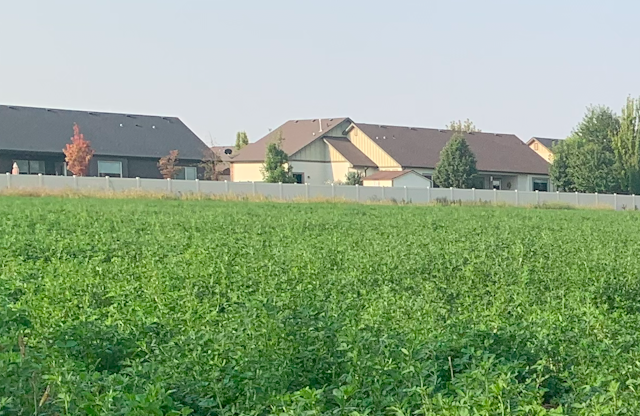Living near farmland can significantly increase people’s exposure to glyphosate, the active ingredient in the widely used herbicide Roundup, new research shows. This chemical has been connected to health concerns, including non-Hodgkin lymphoma and a higher risk of preterm birth.
We are environmental health scientists who study pesticide exposures in human populations, including exposures to herbicides. In our newly published research, we tracked glyphosate levels in pregnant women for 10 months.
We found that those who were living within about a third of a mile (500 meters) of an agricultural field had significantly higher levels of glyphosate in their urine than those who lived farther away. Importantly, we only saw those differences during the time of year when farmers spray glyphosate on their fields, further suggesting agricultural spray as the source of this exposure.
Our research also found that eating organic food, produced without the use of synthetic pesticides, could reduce glyphosate levels in women living far from farm fields – but not in women who lived near farm fields.
Together, the results provide new insight into how people are exposed to this common and potentially harmful chemical.
Why it matters
Glyphosate is the single most heavily used agricultural pesticide in the world. Its use grew dramatically over the past two decades with the increase in production of genetically modified, herbicide-resistant crops. These crops are engineered to withstand the weed-killing effects of herbicides like glyphosate, which means that an entire field can be sprayed with these chemicals, eliminating the weeds without harm to the crop itself. This is a change from previous practices, where herbicide applications had to be more targeted.
While herbicides like dicamba and 2,4-D are known to become airborne, glyphosate is not volatile, so there has been less concern over its potential to drift when it is sprayed on crops.
However, our research provides evidence for the first time that agricultural use of glyphosate still reaches people living nearby.

It is important to note that there is no consensus on whether or not this widely used herbicide causes cancer.
The International Agency for Research on Cancer, part of the World Health Organization, has determined that glyphosate is “probably carcinogenic to humans,” while the U.S. Environmental Protection Agency has concluded that it is “not likely to be carcinogenic to humans.” This debate is playing out in courtrooms across the U.S., with mixed results.
In addition to concerns about cancer risk, four recent human studies found that glyphosate exposure during pregnancy was associated with reproductive effects. These effects included preterm birth, shortened gestational duration and reduced fetal growth.
However, scientists know very little about levels and sources of glyphosate exposure among pregnant women. The potential risk and that lack of data is why our study focused on this group.
How we did our work
We collected 1,395 urine samples from 40 pregnant women living in southern Idaho. This included weekly urine samples from February through December 2021. Among women living near fields, we found that urinary glyphosate levels were about 50% higher during the pesticide spray season – May through August in southern Idaho – than they were during the rest of the year.
For two weeks in June, we also provided study participants with a week of organic food and a week of conventional food, in random order, and collected daily urine samples. Glyphosate levels decreased by about 25% from the conventional to the organic-food week for participants who lived far from fields. But for the women who lived near fields, the shift to an organic diet didn’t change their glyphosate levels.
The results suggest that, for people living in cities and towns, an organic diet can be an effective way to reduce glyphosate exposure. However, for people living near farms, exposure from nearby agricultural applications may matter more.
What still isn’t known
Our finding that living near agriculture is associated with higher glyphosate levels in the body provides important new insights about who is exposed to this herbicide. However, we still don’t know exactly how this exposure is occurring.
While many pesticides are transported by airborne drift, it is possible that glyphosate travels in a different way. For example, it may adhere to soil that is blown or tracked into homes.
Understanding this is pivotal to reducing human exposure to chemicals in agricultural areas. It is also important as urbanization takes over land that was previously farmed. As new subdivisions and residential areas expand into and fragment agricultural areas, homeowners are finding themselves with farm fields, and their chemicals, as neighbors.
The Research Brief is a short take on interesting academic work.


